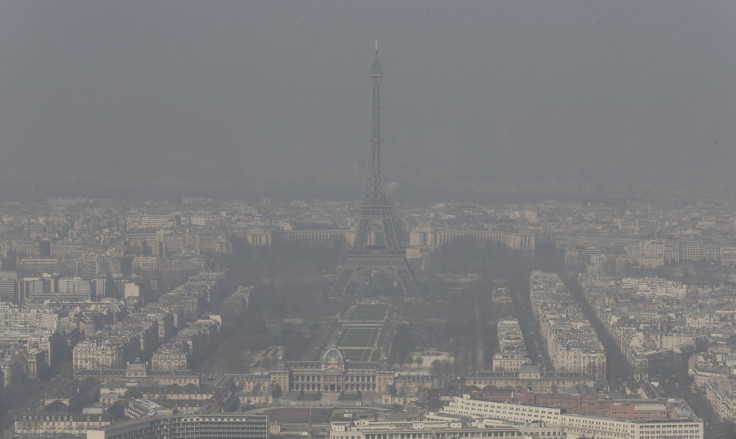Paris Air Quality Index Is Terrible Right Now: Here’s The AQI Reading Compared To Other Cities

March 17 UPDATE: The air in Paris improved considerably.
Welcome to the City of Light (cough, cough, hack).
In an effort to get commuters out of their Renaults and Citroens and onto buses and trains, Paris authorities are offering free public transportation through the weekend to curtail alarmingly high levels of air pollutants emitted by vehicles and industrial activity.
"I am asking all residents in Paris and neighboring areas to favor the use of public transport," Jean-Paul Huchon, head of STIF (the organization in charge of public transportation for the Paris metropolitan area), told the AFP.

Air Quality Index (AQI) readings for the French capital peaked at 185 since Thursday, according to Airparif, the association responsible for monitoring Paris' metro-area air quality. The readings indicate that air pollution is high enough in Paris right now to cause respiratory aggravation among sensitive groups, such as babies and toddlers, people already suffering from respiratory ailments, and the elderly.
The AQI, an increasingly well-known index for anyone living in some of the planet's largest cities, measures carbon monoxide, nitrogen oxide, sulfur dioxide and two kinds of particulate matter -- the tiny specks of soot emitted by factories and particles emitted from internal-combustion engines. When heated by the sun, this toxic stew can create ozone, which is great in the upper atmosphere but hazardous to public health at ground level.
Measurements below 50 are considered normal, while levels between 50 and 101 are typical in urban areas. When the AQI rises above 100, air pollution can be noticeable to some people. At levels above 150, particles in the air can cause respiratory irritation among some members of the general public and more serious symptoms in people with sensitivity to inhaling these fumes and micro-particles. When the AQI hits 200, some cities issue health alerts, warning people to stay indoors and not to exert themselves outside. Levels above 300 can cause local governments to close schools and government buildings.
While Paris is considered one of the cleaner large cities on the planet, unlike such super-sized metropolises as Sao Paulo, New Delhi, Mexico City, Cairo or Beijing, its large concentration of vehicles and industrial activity can, under certain weather conditions, produce noticeable levels of smog. Paris has been experiencing a perfect-storm scenario for pollution recently that included mild days, cold nights, little wind and low precipitation, which keeps contaminants low to the ground rather than blown away and dissipated into the atmosphere, where they cause a less measurable, more debatable effect on the global climate as they build up there.
All of which means that anyone planning a trip to the City of Light will get to enjoy free rides on the Paris Metro, but their photos of the skyline might look like the one above. Bon voyage!
© Copyright IBTimes 2024. All rights reserved.





















